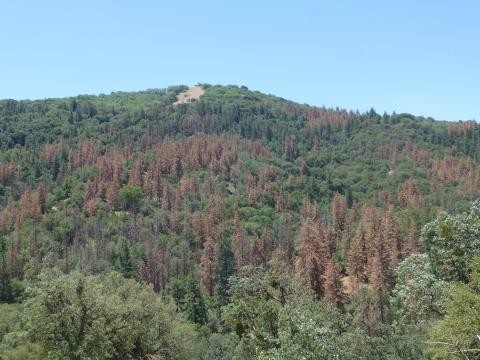By Ana Verayo, | February 23, 2016

Almost all forests in the U.S. are threatened by drought and climate change.
Across the entire United States, almost all forests are now greatly impacted by climate change and continuous drought, according to a new study from different research facilities.
According to lead author of the study, James S. Clark from Duke University, the effects of climate change have been more felt in Western states, however, new results reveal how virtually all of the U.S. forests are now undergoing change, making them vulnerable to future declines. There is a high degree of uncertainty in understanding forest species and how they adapt during intense and rapid changes, and right now, it will become challenging to predict what kind of forests will still be standing in 20 to 40 years.
Like Us on Facebook
Clark adds how increasing temperatures can be unpredictable due to the levels of rainfall and precipitation from the past two decades that have added to severity of this ongoing drought across most 48 continental states.
Western states are now experiencing large scale forest die-offs, caused by bark beetle infestation and wildfires as well, as there are also several prediction models showing that doughts will spread, becoming more frequent than ever, which can be severe and and last longer than usual in many states.
Past research also reveals evidence how these rapid changes in climate can occur quickly than how forests can migrate to newer, safer regions. The team also says that since the weather is now becoming warmer and drier, tree populations in the Eastern woods could fail to expand fast enough into more habitable regions via seed spreading and other natural methods.
This new study collects all the other findings from hundreds of past studies, summarizing a report released earlier this month from several federal agencies and research facilities.
This prolonged drought can affect wildlife at a significant scale when it comes to species distribution, forest biodiversity and productivity including all the products from the forests, which is now crucial to determine what are the effects of changing climate to U.S. forests and how it can be managed.
Scientists and researchers have now gained more valuable insights about how individual trees can react to drought and climate change, however, on a species-wide or a large-scale view, there is still much uncertainty, especially in Eastern forests. This new study should be able to help yield more reliable predictions for forest managers to help reduce larger scale problems, says Clark.
This new study is published in the journal Global Change Biology.
-
Use of Coronavirus Pandemic Drones Raises Privacy Concerns: Drones Spread Fear, Local Officials Say

-
Coronavirus Hampers The Delivery Of Lockheed Martin F-35 Stealth Fighters For 2020

-
Instagram Speeds Up Plans to Add Account Memorialization Feature Due to COVID-19 Deaths

-
NASA: Perseverance Plans to Bring 'Mars Rock' to Earth in 2031

-
600 Dead And 3,000 In The Hospital as Iranians Believed Drinking High-Concentrations of Alcohol Can Cure The Coronavirus

-
600 Dead And 3,000 In The Hospital as Iranians Believed Drinking High-Concentrations of Alcohol Can Cure The Coronavirus

-
COVID-19: Doctors, Nurses Use Virtual Reality to Learn New Skills in Treating Coronavirus Patients







